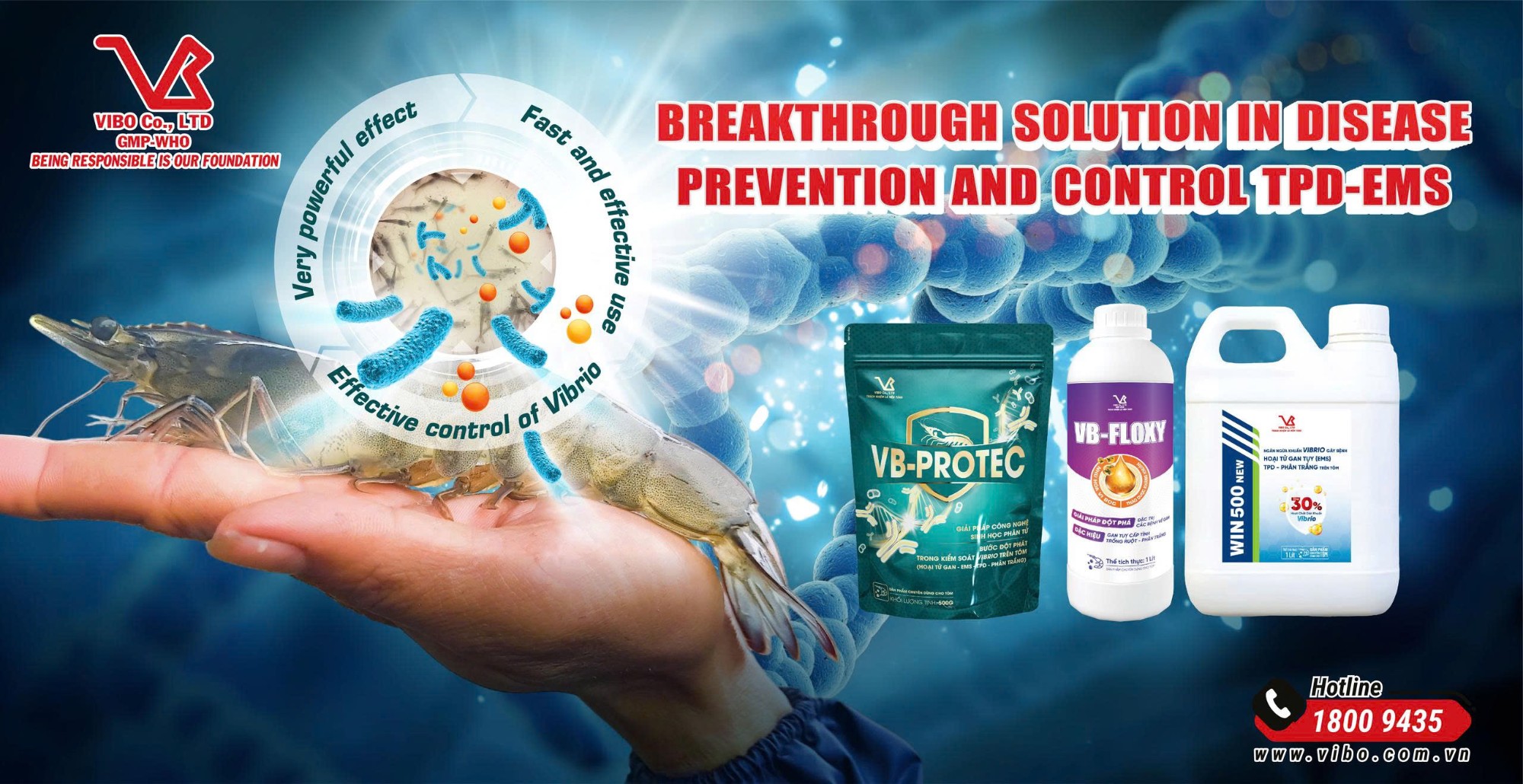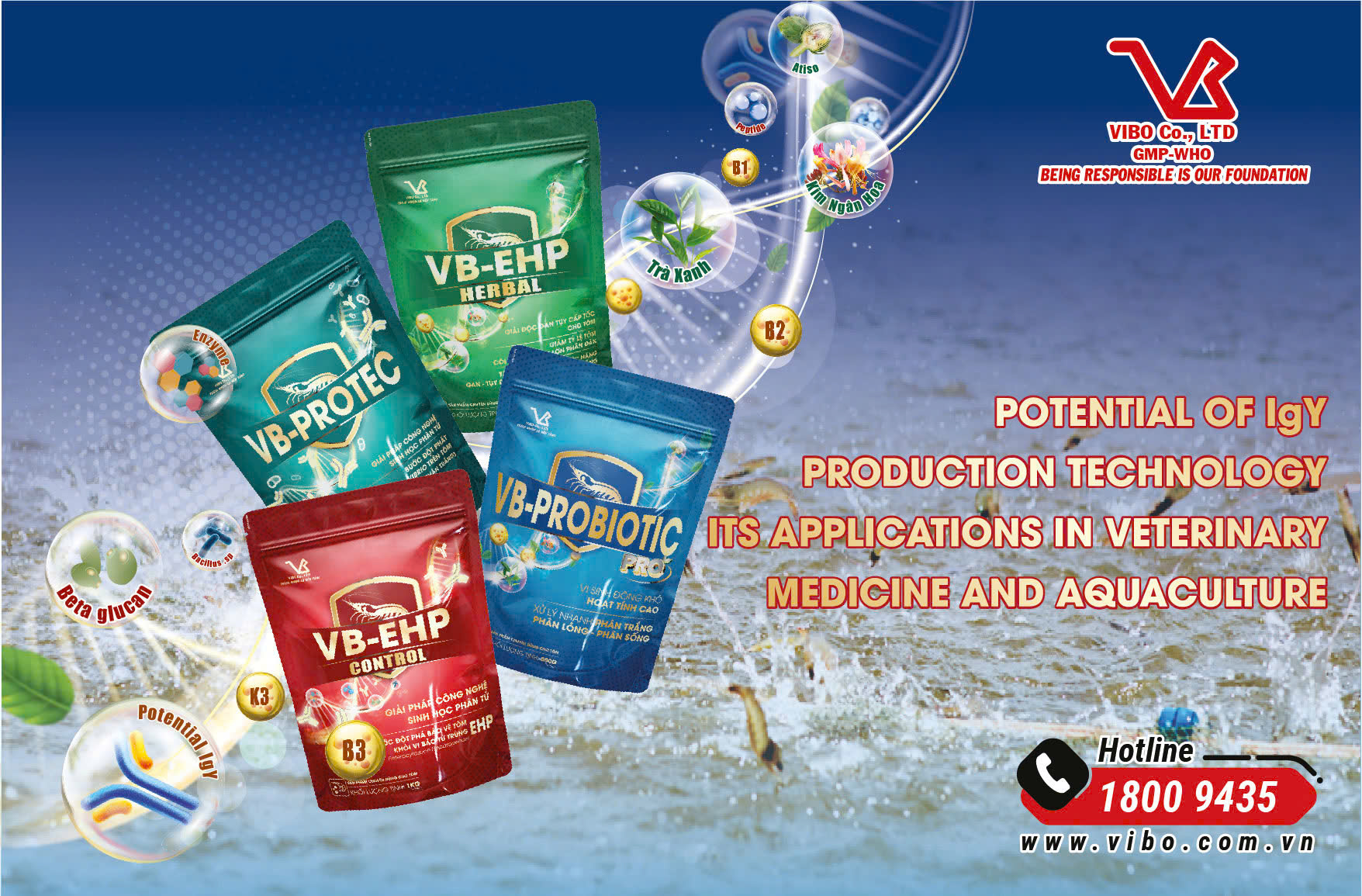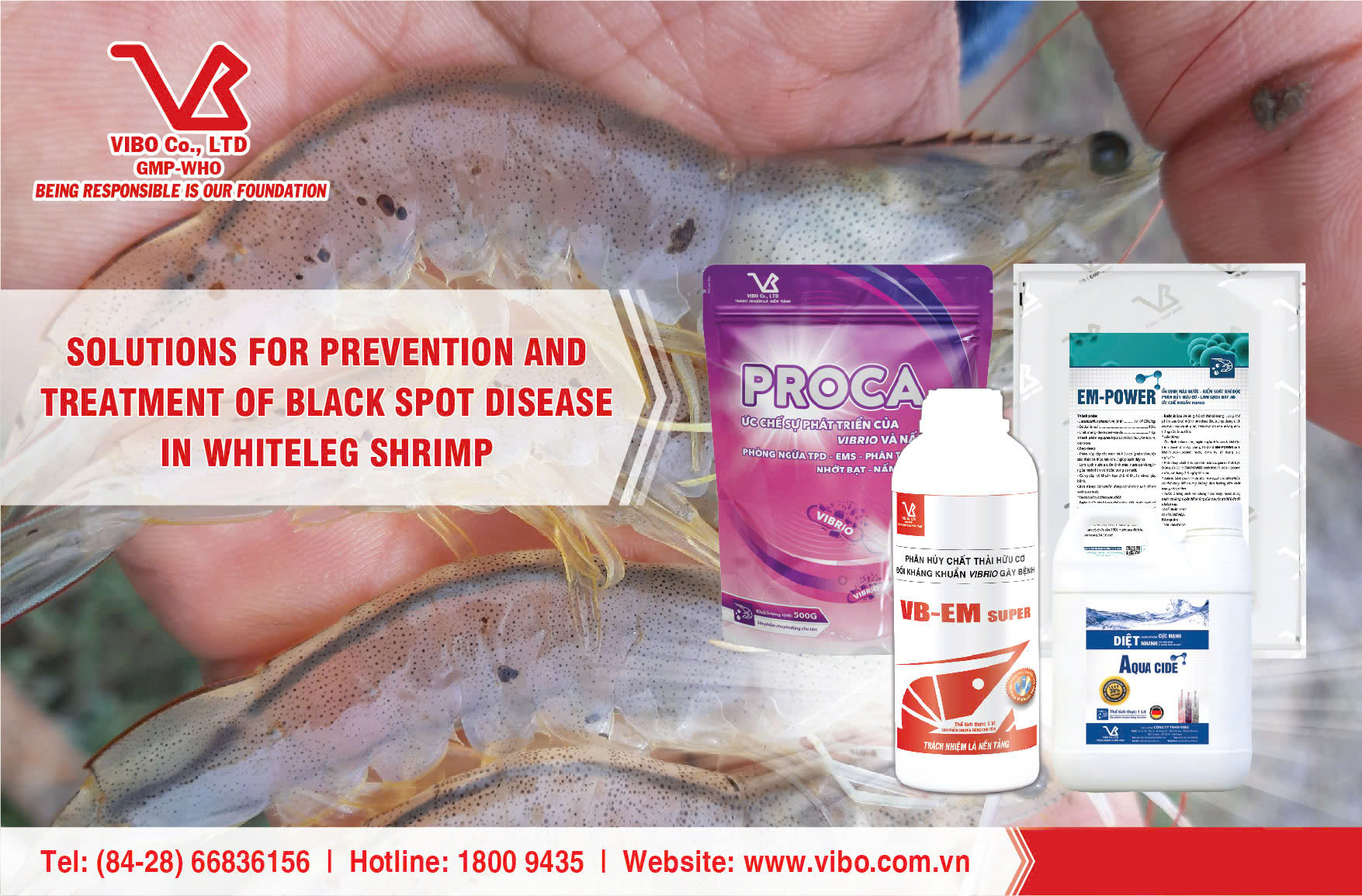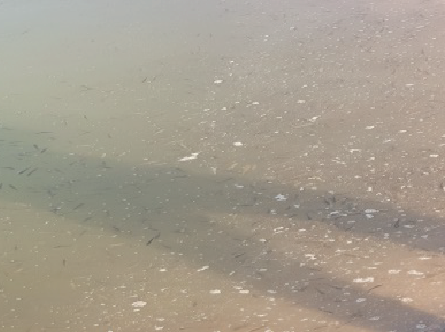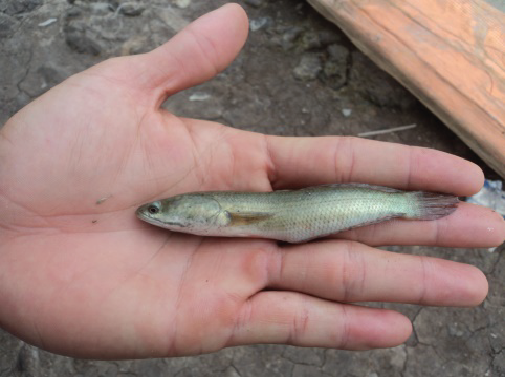- Address: Lot No. 20, Zone G, D1 Street, An Ha Industrial Park, Tan Vinh Loc Commune, Ho Chi Minh City
- Phone: (84-28) 668.36156 / 668.36158
- Hotline: 1800.9435
- Fax: (84-28) 3620.4694
- Email: vibo@vibo.com.vn
- Website https://vibo.com.vn/
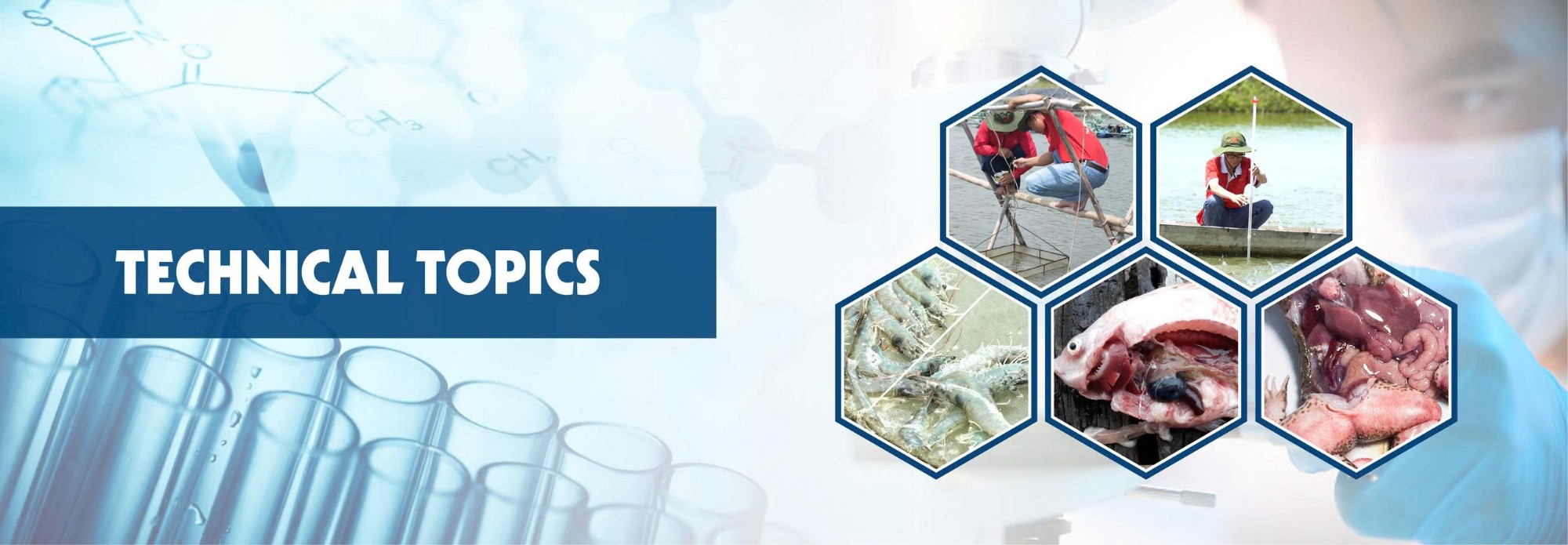
SOLUTIONS FOR PREVENTION AND TREATMENT OF INTESTINAL BACTERIAL INFECTIONS IN SHRIMP
I. THE ROLE OF THE SHRIMP INTESTINE
The shrimp intestine is one of the most important organs in shrimp physiology. However, due to its simple structure, it is highly susceptible to pathogenic invasion. Intestinal bacterial infections commonly lead to several widespread problems such as segmental gut necrosis, enteritis, white feces syndrome, and empty gut, all of which directly affect productivity and crop performance (Figure 1).

Figure 1: Shrimp have good intestines
II. ETIOLOGICAL AGENTS OF INTESTINAL DISEASES IN SHRIMP
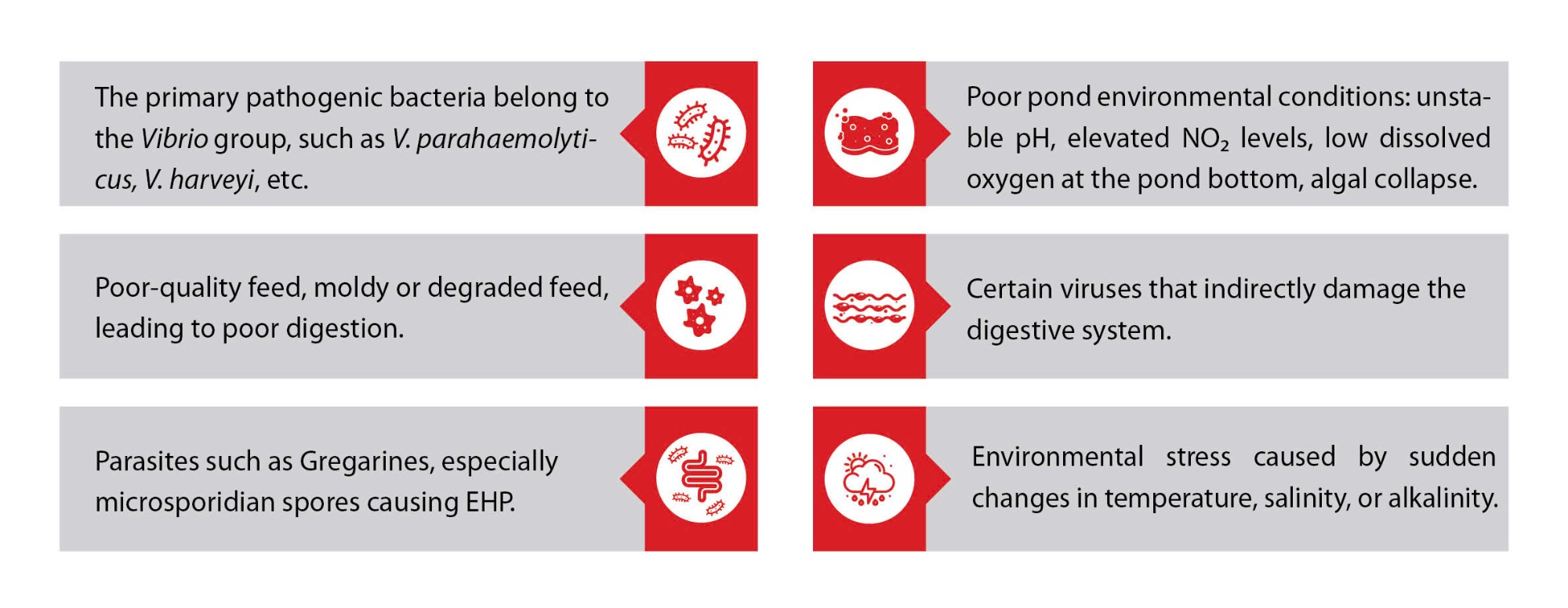
III. CLINICAL SIGNS

IV. PREVENTION AND TREATMENT MEASURES FOR INTESTINAL BACTERIAL INFECTIONS IN SHRIMP
a. Preventive Measures
★ Environmental Management
-
Routine water treatment: Disinfect every 7–10 days using AQUA CIDE at 1 L/1,500 m³.
-
24 hours after disinfection, apply antagonistic probiotics against Vibrio using PROCA 2x at 500 g/1,500 m³.
★ Preventive Feed Additives
-
Supplement herbal intestinal antibodies to control intestinal pathogens using VB-PROBIOTIC pro at 5 g/kg feed, applied three times per week.
-
Enhance the shrimp gut microbiome with BIO-X extra at 5 ml/kg feed, once daily throughout the culture cycle.
-
Add the herbal product GATONIC plus at 5 ml/kg feed (applied in the final feeding of the day) to strengthen resistance against intestinal bacterial infections.
-
Supplement digestive enzymes using VIBOZYME plus at 5 g/kg feed, once daily throughout the culture cycle.
b. Periodic Deworming to Prevent Parasitic Damage to the Intestinal Wall
-
Mix feed with the combination of VB-FENZI (5 g/kg feed) + VB-PROMESUL (5 ml/kg feed) + VIBOZYME plus (10 g/kg feed); administer once daily for 2–3 consecutive days, repeated every 7–10 days.
-
After deworming, perform environmental disinfection using AQUACIDE at 1 L/1,000 m³.
c. Treatment Measures
★ Environmental Control
Days 1 → 2
Disinfect the pond using WIN 500 new at 1 L/1,000 m³, applied in the afternoon (18:00–20:00).
Days 2 → 3
Continue disinfection with AQUA CIDE at 1 L/1,000 m³.
After 24 hours
Reinforce beneficial microbiota and suppress Vibrio by applying:
-
AQUAZYME at 100 ml/1,000 m³ (to enhance Bacillus activity)
-
Combined with PROCA 2x at 1 kg/1,000 m³.

★ Medicated Feed for Disease Control
General Feeding Adjustment
-
Reduce total feed volume by 50%.
Morning Feeding:
-
Mix VB-FLOXY at 15 ml/kg feed
-
Digestive enzyme VIBOZYME plus at 20 g/kg feed
-
Herbal antibacterial product GATONIC plus at 15 ml/kg feed.
Afternoon Feeding:
-
Mix VB-PROBIOTIC pro at 20 g/kg feed.
-
Supplement gut-beneficial probiotics BIO-X extra at 20 ml/kg feed.

Specialized shrimp article by the VIBO Technical Department







